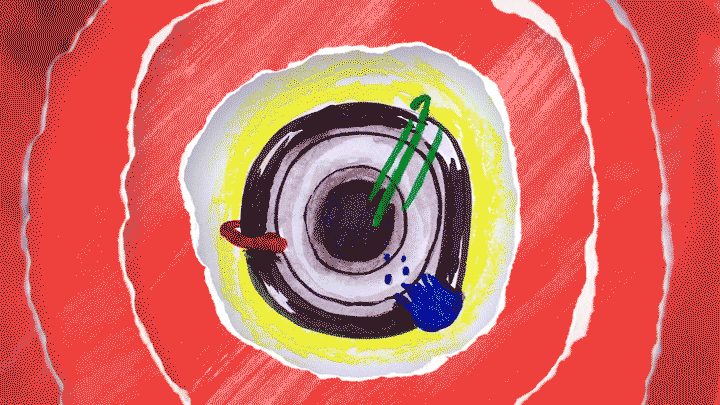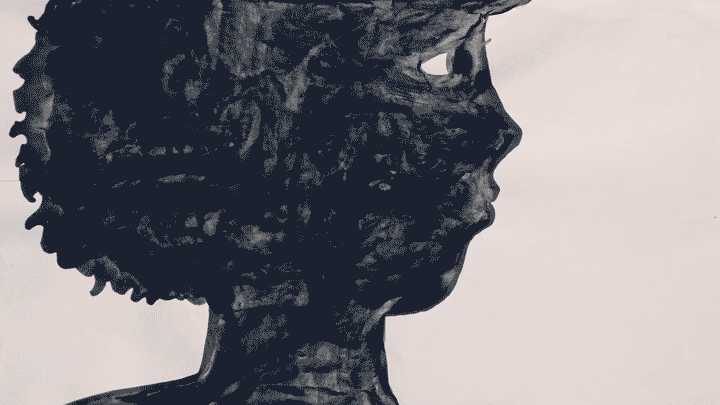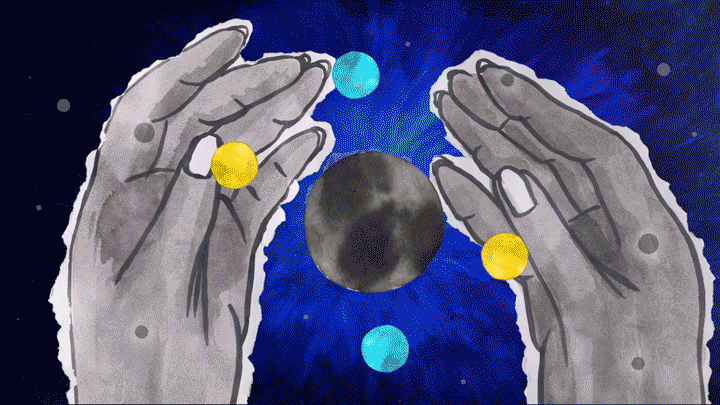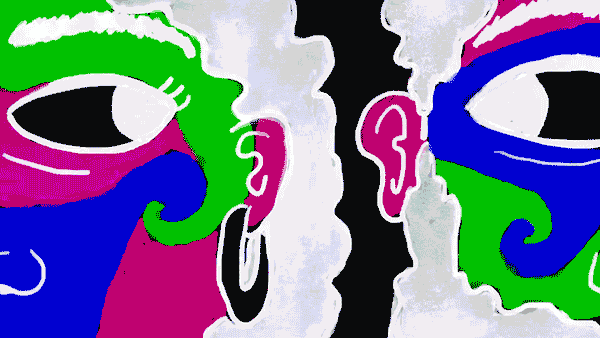The Fantasy World of...Jessica Ashman
About…
Jessica Ashman is a BAFTA in Scotland award-winning artist who works in animation, music, performance and arts education. In 2014 she graduated from the Royal College of Art with a MA in Animation and her work has been supported by Animate Projects, Jerwood Visual Arts Bursary, Arts Council England, UK Film Council and Channel 4's Random Acts. Jessica’s work focuses on creating experimental narratives that explore gender, identity and race, using traditional animation techniques in moving image, installation and music performance. Jessica also engages in arts education, teaching her practice at Goldsmiths and facilitating arts workshops at the ICA, The Wellcome Trust and the Tate Modern.
When did you start animating and what drew you to animation in the first instance?
I was first drawn to animation as a teenager, studying for my art and graphic design A Levels many moons ago. For a long time as a youth I wanted to be a journalist, as I was very much drawn to storytelling and narratives of my communities. But I was also transfixed with drawing and model making and I realised I could still tell these stories with drawings and models…even more so when I made them move. I made my first animation at 16, trying to create a music video to my favourite Bjork song, Jóga. It looked truly awful, but I was hypnotised by the process of frame-by-frame image making.
How do you approach world-building in your work? What role does fantasy play in your world-building?
World building in my work is very important to me and I often think of the types of universes my ideas, characters and stories inhabit. This is one of the main joys of animation for me, being able to be completely unbounded to reality in my concepts, stories and themes. I usually start this process of world building by thinking loosely of the ‘rules’ of the universes I create. What textures exist in this world? How do the characters move? What does this world sound like? I feel that each film I make exists in its own separate type of universe. In my 2013 film The Cycle, I was inspired by the metaphorical anatomical drawings of Fritz Kahn and wanted to create a similar universe of ‘body emotion machines’ that control the moods and feelings of an unknown woman experiencing the end of a relationship. This universe meant minimal and robotic movement, and a limited colour palette. My 2018 film Hold Tight explored a universe of rhythm, bass and movement. The colours of the film were inspired by various flags of Caribbean nations, whilst frenetic edits and scenes with multiple textures and shots in one image were aimed to mimic the sensory overload which is experiencing Notting Hill, Hackney or St Paul’s Carnival in the UK.
What sources/points of reference do you look at or draw from during development or production?
When it comes to an actual animation production, the references which inspire the work are often the very reason the work exists. Sometimes it can be something as simple as a pause or a stutter between dialogue in an oral testimony I have conducted, or a family photograph which inspires the look and feel of a work. For instance, when I was creating my 2017 essay film I Don’t Protest, I Just Dance in My Shadow I was inspired by creating a literal ‘Blackness’ which envelops a woman, searching for meaning in her identity as a Black woman working in an arts landscape. The physical paper transcripts from the interviews, the ink used to take notes, the colours of the highlighters highlighting a sentence and the laughter from the recorded interviews ended up being the design and sound references for this animation world. Stories from the communities I was raised in are also a huge inspiration to my work, especially stories of joy. I’m incredibly interested in aspects of magical realism, finding spaces of escapism and fantasy in my heritage as a Black woman and working-class woman. I am drawn to the work of fantasy writers such as Octavia Butler and Nnedi Okorafor who do the same in their writing and in music, with musicians such as Sun Ra, Janelle Monae and the Comet is Coming. These writers, artists and musicians channel experiences of Blackness into otherworldly, Afrofuturistic stories and ultimately make narratives of connection, which aren’t solely focussed on ideas of oppression and marginalisation (these elements can certainly provide inspiration: anger can be channelled into creative energy), but embrace joy and freedom. For the latest project I’m working on, Dawta, I’m inspired by Octavia Butler’s seminal work Kindred, which uses time travel as a way of exploring ancestral trauma. I really connected with the idea of the book’s main protagonist, a Black women called Dana, having the ability to time travel, and wanted to explore the idea that all Black women have this power. And if we have this power, how could we use it to explore our own individual ancestral pasts but also our ancestral futures?
What is the decision making process behind your use of different mediums or animation techniques, and how would you say they reinforce or reveal the fantasy/imaginative elements of your work?
I’m often drawn to using different mediums to tell my stories and this merely comes from a curiosity and inability to commit! Currently, I’m most excited in how I can take fantasy narratives to physical places and physical audiences (although that has been hampered somewhat by the pandemic). I’m interested in taking fantasy outside of the screen or at least, combine with screen, in a form of expanded cinema with performance, installation, music and soundscapes. In all honesty, part of this is a response to a disconnect from the tedious, labour intensive nature of independent animation I’ve felt over past few years of a 13 year career, and a desire to create connections with an audience on a more visceral level. Ultimately, I feel that the best fantasy and speculative fiction worlds are influenced by reality. These worlds can provide a place of solace, solidarity and freedom to people from marginalised backgrounds, including myself. This is really what I aim to achieve with my work – creating a home and a sense of belonging for myself and broadcasting this strange but comforting home to others like me.
What is your favourite fantasy film that isn’t an animation?
Can I say two? One is more of a science fiction film and it’s Andrei Tarkovsky’s Stalker. I love its uneasy, dystopian, disquieting
tone, and the idea of a zone grounded in the real which can bring your inner dreams to life. The other is Michel Gondry’s Eternal Sunshine of the Spotless Mind. I know that it isn’t strictly fantasy, but the way the films blurs reality, memory and nostalgia to create a strange new reality is something which seems quite like a fantasy film!
What is your favourite animation that isn’t a fantasy?
My favourite animation that isn’t a fantasy is probably Mary and Max by Adam Elliot. I love the concept of two opposite personalities connecting on two sides of the world and the film’s compassionate handling of autism – something which really inspired me in my first professional animated film, Fixing Luka.
What is your favourite fantasy/animation film and why?
Again, I can’t pick one, so here’s two! One is Fantastic Planet by René Laloux and Roland Topor because it’s fun, weird and sexy. The other is Princess Mononoke – it was the first Ghibli film I saw as a 14 year old and blew my mind to the potential of animation storytelling outside of Disney, especially with such a powerful female lead.
To view Jessica’s entry for the Fantasy/Animation squiggle game, click here!
**Article published: April 9, 2021**









